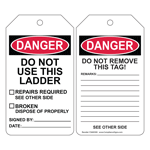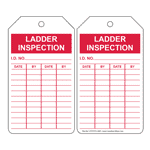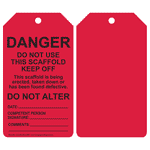
C.L.I.M.B Your Way to Ladder Safety in the Workplace

When it comes to workplace safety, there are some dangers that may pop into your mind immediately, like forklifts or hazardous chemicals. But all too often, it’s the more mundane items that pose a more consistent threat. Ladders are a common tool found in most homes and nearly every workplace. The World Health Organization reports that the United States leads the planet in ladder accidents with 164,000 ER-treated injuries and 300 deaths annually. What’s more, most ladder fatalities occur from falls of less than 10 feet. That makes workplace ladder safety a critical part of your safety program.
One ladder company, Louisville Ladder, created a clever acronym to help people remember the steps to workplace ladder safety — C.L.I.M.B. Let’s take a look at these steps.
Choose the Right Ladder
Choosing the right ladder for the job goes beyond making sure it’s tall enough (although that is also very important). To make sure you have the correct ladder for the job at hand, consider these four factors:
- Ladder style – There are different ladder styles designed for specific purposes. These include step ladders, extension ladders, platform ladders, and twin step ladders just to name a few. Consider what you will be doing while you are on the ladder and what kind of support and room you’ll need. Choosing the right ladder style is the first step to ladder safety.
- Ladder height – Of course this seems obvious, but sometimes it just seems easier to make do with a ladder that’s a bit too short or too tall than to spend the time finding the one that’s the right height. This can lead to overextending while on the ladder or placing the ladder in a bad position. Both situations are recipes for trouble.
- Duty rating – A ladder’s duty rating will tell you the maximum safe weight it can handle. Most ladders come in one of five duty ratings. When considering this, be sure to factor in the weight of any protective gear and tools that you’ll have with you when you climb.
- Choose the right material – You can find ladders made from a variety of materials such as wood, fiberglass, or aluminum. Different materials work best for different jobs. Think about proximity to electrical wires, storage conditions, humidity and other such factors and choose a ladder that is safest for your situation.
Look for Damage and Missing Parts
It’s easy to take your ladders for granted. But, a broken or missing rung, a crack in the base or any other seemingly minor defect could have a disastrous effect. OSHA requires that employers inspect ladders on a regular basis, but does not set a strict standard on just how often those inspections should occur. When inspecting a ladder be sure to:
- First look for an inspection tag that indicates damage
- Lay it flat on the ground to check for warping or bending
- Check each step for cracks or damage
- Check the top cap for damage
- Inspect the feet very carefully — Damaged ladder feet can lead to the ladder slipping and falling
- Look at the side rails for signs of wear or damage
To make things simple, keep ladder inspection tags on hand and tag your ladders, sign and date by authorized employees after they inspect the ladder. That way you’ll know exactly when each workplace ladder safety inspection was performed and by whom.
Ladder and Scaffold Tags
 |  |  |  |
Implement a Safe Setup Routine
How you set up your ladder can be just as important as the condition of the ladder itself. You never want to set your ladder on anything but a flat, dry surface. That means you don’t set it on boxes, pallets or any wet surface even if it seems safe at the time. Never set up the ladder against a door or anything that might move or give underneath your weight. Double check the spreaders on step ladders to be sure they are locked into place.
Taking a little extra time and using some common sense when setting up your ladder can go a long way towards avoiding dangerous and costly workplace accidents.
Move Safely
Sometimes the drive to get the job done overrides our good sense when it comes to climbing ladders. It’s common to see someone climbing with only one hand as they carry up a hoard of tools. Or, you may find someone leaning way out to reach for something rather than take the time to move the ladder. You may even find a worker going up a ladder backwards to reach an odd spot.
Here are a few workplace ladder safety tips to keep in mind when getting ready to climb a ladder:
- Wear slip-resistant shoes
- Always face the ladder
- Keep your hands free – use a tool belt or pulley to lift up any necessary tools.
- Keep three points of contact at all times as you climb. That means two feet and one hand or one foot and two hands at any given moment.
- Don’t overreach. If you have to extend your center of gravity beyond the center of the ladder, the ladder should be moved or a new ladder should be chosen for the task.
- Take your time and focus on your ascent and descent.
- Inattention to what you’re doing while climbing a ladder is one of the easiest ways to have a ladder accident. A little focus can go a long way.
Be a Climbing Safety Expert
The best bet for any business when it comes to workplace ladder safety is to have proper safety training. Assign one or two people to be the point people on ladder safety and conduct training for all staff members. Understanding the steps to C.L.I.M.B. may not make you a ladder safety expert, but it’s a big step in the right direction. Don’t take ladders for granted and you can minimize one of the biggest accident threats in your workplace.

